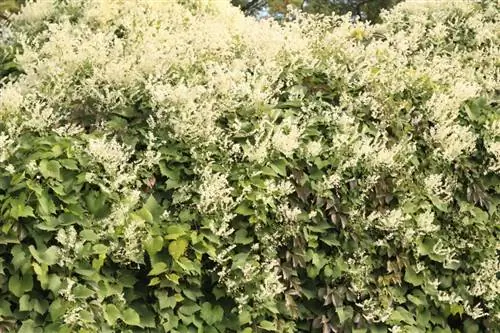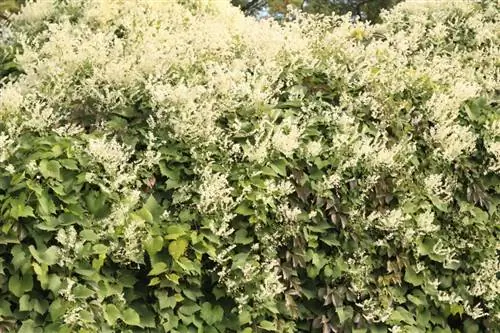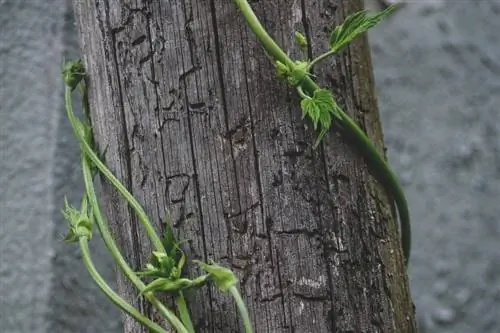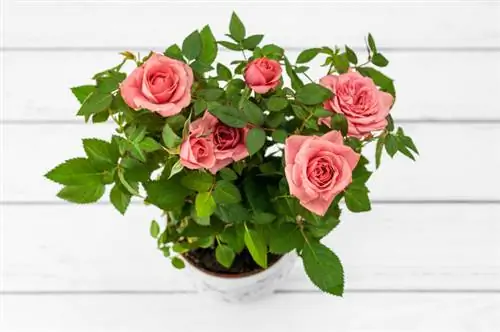- Author admin [email protected].
- Public 2023-12-16 16:46.
- Last modified 2025-06-01 06:02.
When it comes to the fastest possible, large-scale greening, climbing knotweed (Fallopia baldschuanica) is an excellent choice - hardly any other climbing plant grows as quickly and densely as knotweed. However, due to its strong, crowding growth, it is not suitable for all locations and should also be cut back regularly.

What is knotweed as a climbing plant?
The creeping knotweed (Fallopia baldschuanica) is a fast-growing climbing plant that can cover large areas in a short period of time. It requires a stable trellis and should be pruned regularly to prevent uncontrolled growth and damage to neighboring trees or structures.
Knotweed is a climbing plant
Climbing plants are divided into four groups, with the distinction being made based on the climbing technique. In addition to the clinging root climbers (e.g. ivy, climbing hydrangea), there are also climbing plants (e.g. clematis), spreading climbers (e.g. blackberries) and creeping plants, which also include creeping knotweed. Climbing plants climb up a support that they wind or wrap tightly around. For this reason, the creeping knotweed definitely needs a climbing aid.
Suitable climbing aids for knotweed
Trails or climbing aids should be installed in such a way that the knotweed is kept away from gutters, pipes, cables, windows and roofs - the plant has considerable destructive power. Attach stable trellises (€279.00 at Amazon) (bamboo as a material is unsuitable for this), trellises or even rope systems in such a way that they keep the plant away from the facade, etc. Although the creeping knotweed thrives in the shade, it - like all climbing plants - always strives towards the sun.
Knotweed not suitable for mixed planting
Also due to its strong, crowding growth, creeping knotweed is not suitable for mixed planting and should be planted as far away as possible, especially from trees and bushes. These are easily entwined and crushed - the knotweed even manages to cause strong trees to die and thus fall over time. When planting, make sure that the creeper has enough space and area to grow - balconies or similar are also unsuitable for the same reason.
Stop knotweed in time
With a growth rate of up to eight (or more meters) per year, the climbing knotweed is one of the strongest growing climbing plants of all. Its shoots become woody and over time the plant forms a considerable trunk. In addition, knotweed wraps itself around everything that gets in its way and can cause considerable damage. To avoid this and excessive growth, the plant must be cut back regularly.
- Radical pruning is done in early spring.
- The knotweed is cut back close to the ground.
- All previous year's shoots are removed.
- The new shoots are guided along the trellis as desired.
- Shoots in an unsuitable growth direction must be removed immediately.
Tips & Tricks
The knotweed family is very diverse. In addition to the climbing plant Fallopia baldschuanica, there is also a ground-covering and several herbaceous knotweeds that are also suitable for the home garden.






